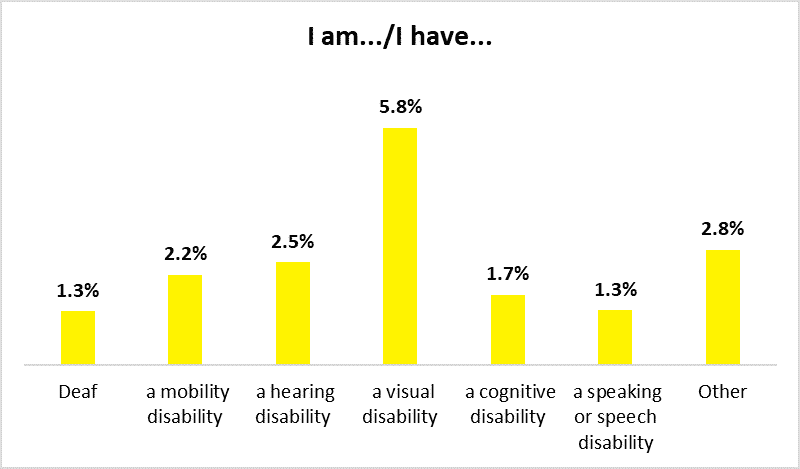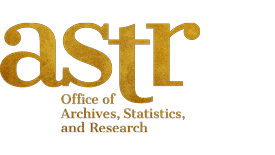I saw that it is in the providence of God that widows and orphans, the blind, the deaf, the lame, and persons afflicted in a variety of ways, have been placed in close Christian relationship to His church; it is to prove His people and develop their true character. . . If we have the true religion of the Bible, we shall feel that a debt of love, kindness, and interest is due to Christ in behalf of His brethren; and we can do no less than to show our gratitude for His immeasurable love to us while we were sinners unworthy of His grace, by having a deep interest and unselfish love for those who are our brethren, and who are less fortunate than ourselves.
Ellen G. White, Testimonies for the Church, 3:511
For much of its history, the Seventh-day Adventist Church has been committed to reaching every corner of the world with the good news of Jesus Christ, regardless of geographic location, language, or lifestyle. (Read more about this in a previous blog.) Indeed, the Adventist Church takes the Great Commission very seriously.
However, within our church walls, there is a specific group of people whose needs may essentially be “unreached”: those with disabilities. Many of those with disabilities not only experience barriers to access in their communities but in their churches, as well; these barriers can be both physical and/or social. While many churches have worked to eliminate physical barriers, there are still structural barriers in place that prevent members with disabilities from participating fully in church life.
While assessing many important aspects of church life and members’ understanding of Adventist beliefs, the 2017-2018 Global Church Member Survey (GCMS) also gathered important demographic information about Adventist members around the world. One area assessed was whether members had disabilities or whether they were deaf.((The Deaf are considered a culture group with unique languages.))
Of the 60,040 respondents,
- 1.3% were Deaf;
- 2.5% had another hearing-related disability;
- 2.2% had a mobility disability;
- 5.8% had a visual disability;
- 1.7% had a cognitive disability;
- 1.3% had a speech or speaking disability; and
- 2.8% reported having another type of disability (i.e., “other”).

GCMS 2017-18 Q3, n= 60,040
Historically, people with disabilities and the Deaf have been denied the opportunity to participate fully in various aspects of society, including religious and church life.(( S. Trecartin and T. Trecartin, “Disability and the Church: Removing Barriers to the Kingdom of God,” in Church and Society: Missiological Challenges for the Seventh-day Adventist Church, ed. R. Maier (Berrien Springs, MI: Andrews University Theological Seminary, Department of World Missions, 2015).)) If the Seventh-day Adventist Church is truly committed to being a church that seeks total member involvement, we must seek to understand better not only the challenges that people with disabilities and the Deaf face concerning physical access, but also work to eliminate the social exclusion these groups face in church life participation.
The way people understand disability greatly influences the way they treat people with disabilities.((J. Smart, Disability, Society, and the Individual, 2nd ed. (Austin, TX: PRO-ED, 2009).)) A simplistic approach that reduces disability to a moral, medical, or social issue will result in further marginalization. The medical model of disability assumes that disability is biological or pathological in origin, and the individual becomes the problem of focus.((S. Burch and I. Sutherland, “Who’s Not Yet Here? American Disability History,” Radical History Review 94 (2006): 127–147; J. Hayes and E. Hannold, “The Road to Empowerment: A Historical Perspective on the Medicalization of Disability,” Journal of Health and Human Services Administration 30 (2007): 352–377.)) In contrast, the social model of disability offers an explanation of disabilities that helps one to recognize the role of society in creating disabilities. The important shift from viewing disability as an individual deficit to viewing it as it relates to societal barriers should serve as a challenge to congregations to consider their role in eliminating the barriers that emerge from stigma, assumptions, and social limitations, not simply the physical restrictions experienced by people with disabilities.
Recently, the Seventh-day Adventist Church launched a new General Conference program called Adventist Possibility Ministries (APM). This program focuses on seven broad ministry categories: the Deaf, the blind, the physically challenged, the emotionally and mentally challenged, orphans and vulnerable children, the widowed, and caregivers. APM seeks to bring awareness, acceptance, and action for and with people with disabilities, and upholds the principle that “All are gifted, needed, and treasured.” It is our hope and prayer that this new program will begin to facilitate change within the Adventist Church on behalf of those with disabilities and the Deaf. In July 2020, a historic meeting took place where nearly 200 APM leaders from all over the world met by Zoom to develop strategies for each of the seven ministries. These strategies will not only address the physical and social barriers to inclusion in church life, but also prioritize the involvement of people with disabilities and the Deaf in mission outreach, spiritual development, and leadership development.
When you consider the presence of those with disabilities and the Deaf in your congregation, how can you—personally—make changes so these groups of people do not feel marginalized? How can your local church effectively eliminate barriers for the disabled, allowing them to become involved in ministry? How can your church support Deaf ministry? What are some other programs, beyond APM, that you might be able to draw up as a resource for more effectively including and ministering to, for, and with those with disabilities and the Deaf?
Speak up for those who cannot speak for themselves, for the rights of all who are destitute. Speak up and judge fairly; defend the rights of the poor and needy (Proverbs 31:8–9).
For more information on 2017-18 Global Church Member Survey (GCMS) go to the Meta-Analysis Report.
Creado en colaboración con el Instituto del Ministerio de la Iglesia (Institute of Church Ministry).
Published by ASTR

